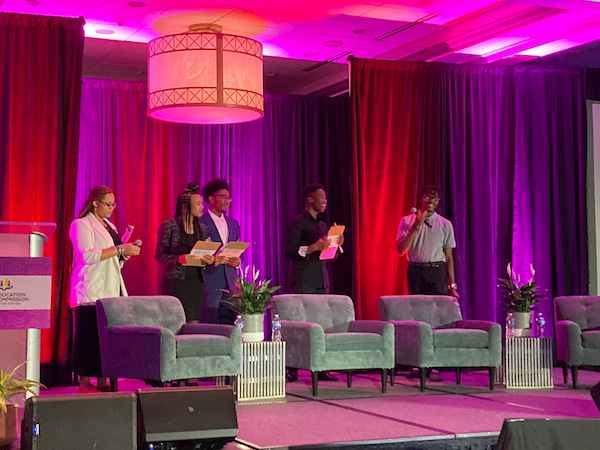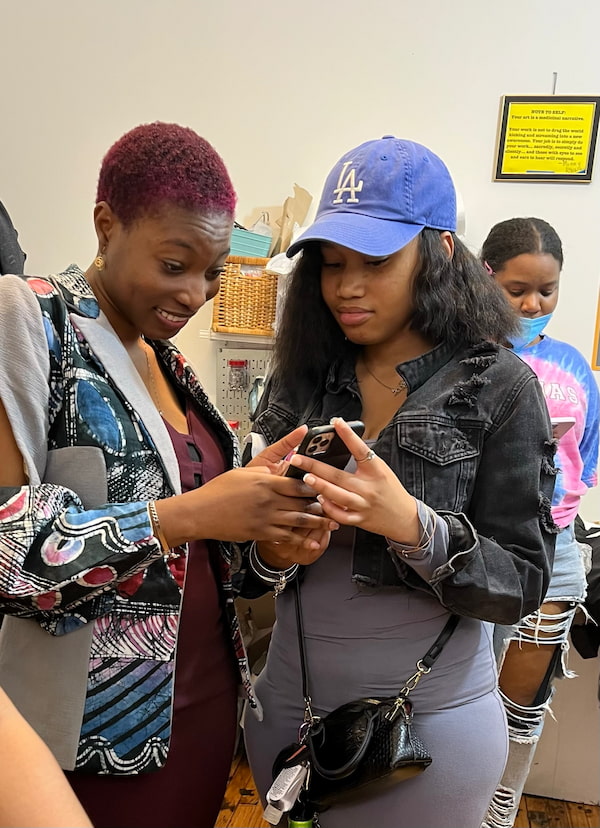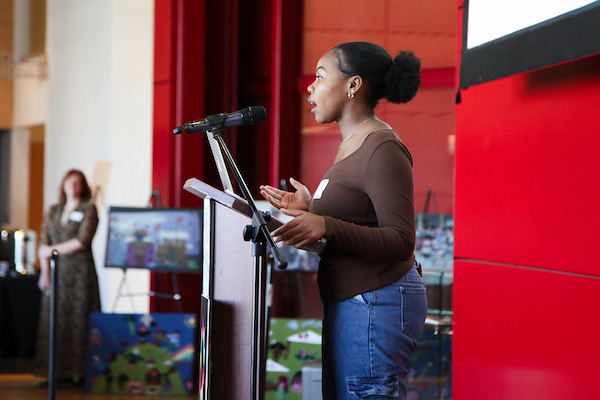This post is part of a series examining more leadership training in the arts.
No one bats an eyelash when they hear that dancers should start in elementary school, or cellists ought to begin on quarter-size instruments at age five. But, oddly, the assumption seems to be that arts leaders can mosey into the field quite late in life, entering stage left from performance, business, or teaching. However, if you think about the challenges of today’s complex arts environment – and the pressing need to diversify the field – why not begin much earlier to open up the field to the many young people who could lead arts organizations to different operating models, changed relationships to communities, and vigorous new forms of creation?
A few background facts:
- Access to high-quality, sustained arts learning remains linked to levels of community wealth. Young people growing up in under-resourced communities have fewer arts opportunities from early childhood through high school.
- Not surprisingly, federal data on family spending on out-of-school opportunities (including the arts) shows that children growing up in comfortable circumstances have markedly higher rates of out-of-school learning opportunities.
- The average cost of a bachelor’s degree is close to $100,000 at a 4-year public college. The average cost at a private college is much higher.
- Many first-time and lower-income college attendees feel the responsibility to enter fields with guaranteed incomes (e.g., finance, computer science, or medical care) in order to honor their families’ investment in their educations. This can mean they step back from pursuing careers in the arts.
Given this context, it can’t be surprising that galleries, theaters, and dance companies struggle to build a diverse staff from entry-level to C-suite.

But this context is not a given – it could change – if we built on current efforts to create pathways. Consider these efforts:
- Based on rapidly-evolving career curriculum requirements, high schools in states like Massachusetts and Pennsylvania are actively beginning to offer credit for real-world internships – including those in arts-related fields. For example, Boston’s Institute of Contemporary Art’s Fast Forward program provides multi-year, paid, and credited internships where high schoolers acquire media and production skills, as well as experience working across museum departments.
- Creative youth development programs can include explicit career training. Take a look at how Ghetto Film School’s 30-month filmmaking program provides training in writing, photography, and direction, as well as marketing and development. Or peek at DownCity Design’s newly renovated facility, introducing Providence, RI’s youth to working at the intersection of community needs and design possibilities. Or look at the extraordinary work that Chicago Arts Partnership in Education (CAPE) does with high school students, giving them the agency to conceive, plan, and execute gallery exhibitions: a new generation of curators is in the pipeline for sure.
- Summer and school-year programs can place high school youth deep in the operations of arts organizations, where they learn about program design, marketing, development, and more. In five cities across the country, Bloomberg’s Arts Internship partners with local organizations to make this happen.
- Many students need to work during college and in the summers. Rather than serving lunch in the dining hall or leading college tours, young people interested in the arts can work in arts and humanities settings. At the University of Pennsylvania’s Center for Undergraduate Research and Fellowships, students can earn while working at arts and humanities organizations throughout their college years.
But more needs to happen.


- Countless arts and culture organizations now have internship programs, youth councils, and fellowships. But many of these opportunities are short and decidedly “junior” (e.g., filling out the ranks of summer camp instructors, working in customer service, conducting family tours). It’s time that institutions re-think these positions as a sequence of living-wage, skill-building opportunities through which interested young people progress during their high school to college years, emerging as young professionals. One great example is the New Victory Theater’s Usher program, where young people learn not only how to manage the front-of-the-house, but develop personal and professional career skills, while earning.
- Many cities host summer youth employment programs. But jobs in arts-related organizations can be rare among those offerings. It’s time for arts organizations to lobby their cities for slots and then ensure that the positions are more than ticket-takers and grounds-keepers.
- Americorps offers young people paid service positions in hospitals, local governments, parks, and beyond. As part of this national effort, ArtistYear coordinates and offers positions for teaching artists to serve in Title 1 schools. Imagine if that program expanded and that same level of coordination and programming were available to young adults who want to run arts and culture non-profits in the future.
- Creative Youth Development (CYD) organizations often hire their graduates as staff. But sometimes, those positions stall out at the program director level without opening doors to senior management. From the get-go, youth employees have to do more than attend and assist. As early as is responsible, they have to be part of difficult decision-making about budget choices, hiring, selections, and admissions. They have to learn to recognize and confront structural inequalities and to navigate human relations in an increasingly divided and divisive world. These experiences can’t wait: they are at the heart of programs’ and organizations’ survival and evolution. There has to be a sequence of positions explicitly designed to nurture an encompassing understanding of organizations’ work. This is crucial for young people whose families, schools, and neighborhoods can offer fewer opportunities for more than shift work and service jobs.
- Arts research and consulting firms (like WolfBrown) have a responsibility to create more than short-term, one-time internships. Instead, we ought to be seeking young people interested in arts administration, research, and policy wherever we work. We ought to be designing internships that take advantage of digital work opportunities, allowing young adults to finish their educations and earn at least a living wage, with regular increments. We ought to help them figure out how their work can fulfill course requirements and access additional positions to round out their skills. Young adults need sequential opportunities across years that may begin at entry level but lead to increasing responsibility and transferrable skills.
We have to put an end to the excuse that there are no experienced applicants of color. We have to change the ways in which board leadership replicates itself in terms of age, race, and experience. Museums need curators who have long been at the table where hard choices are debated. Parks, orchestras, and theaters require leaders who can build new publics. These individuals don’t just appear – they develop. The kinds of capital and courage they need grow over time – but only if they have the paths they deserve: early and fully.
Want to change who founds, runs, and saves cultural institutions? Early and open pathways are an absolutely necessary start.

This is post is part of our On Our Minds newsletter. Previous issues of On Our Minds focused on equity in the arts. You can read them here:
Arts Outcomes Worthy of Pursuit – Joanna Borowski and Samuel McDonald of the New Jersey Symphony’s Education and Community Engagement Department share outcomes they considered worthy of research for their Training Ensemble.
Access to Evaluation Services – Finally, our colleague and collaborator Allison Russo shares how close to 100 arts education organizations in Newark are working together to gain access to quality evaluation services.

